当前位置:网站首页>[risc-v] external interrupt
[risc-v] external interrupt
2022-07-06 03:13:00 【Mr. Jiada】
It is divided into interrupt and exception , The main record here is RISC-V Interrupt of instruction set .
List of articles
One 、CPU block diagram
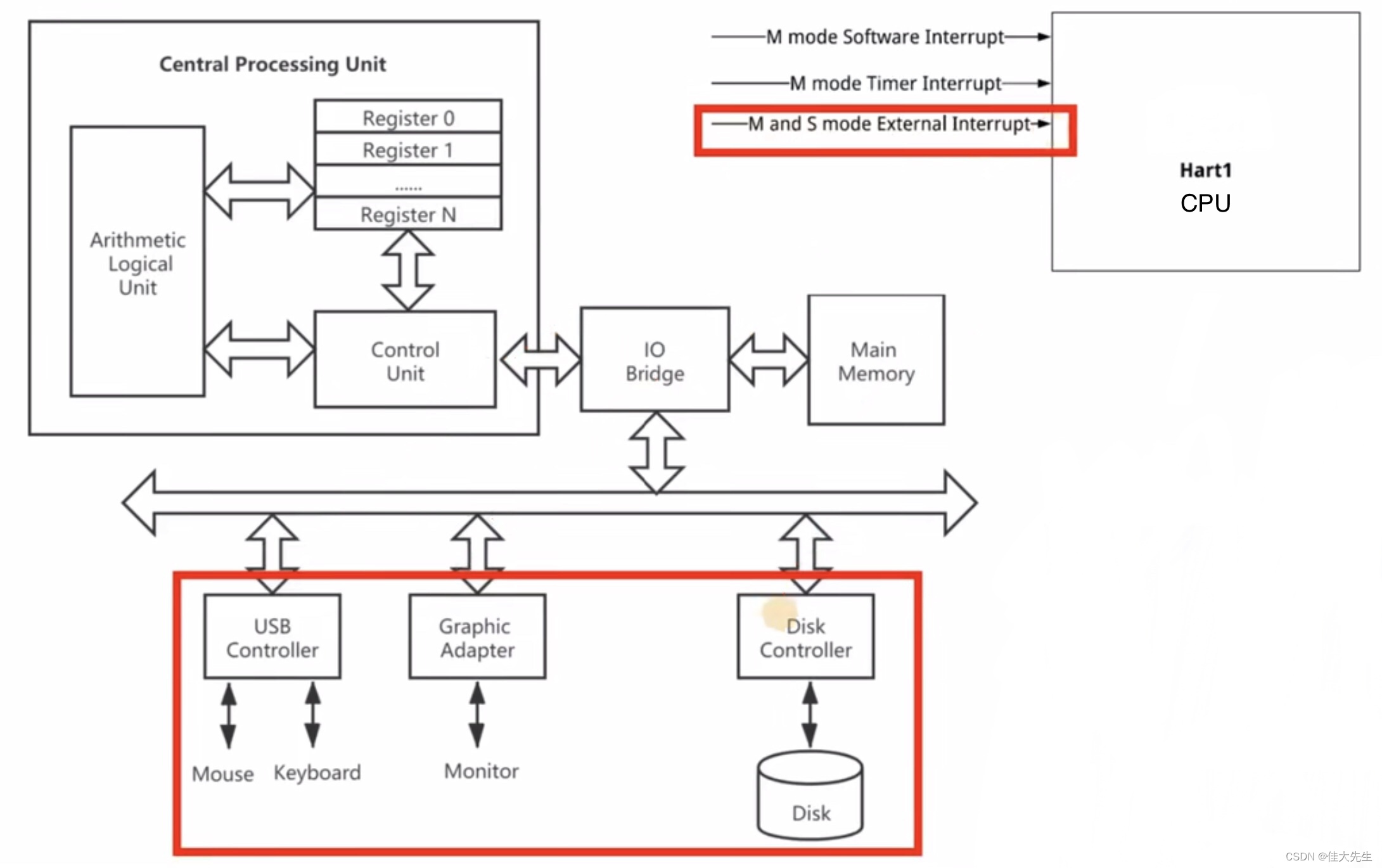
Two 、RISC-V Classification of interruptions
- Local interrupt (Local interrupt)
- software interrupt
- timer interrupt
- Global interrupt (Global interrupt)
- externel interrupt
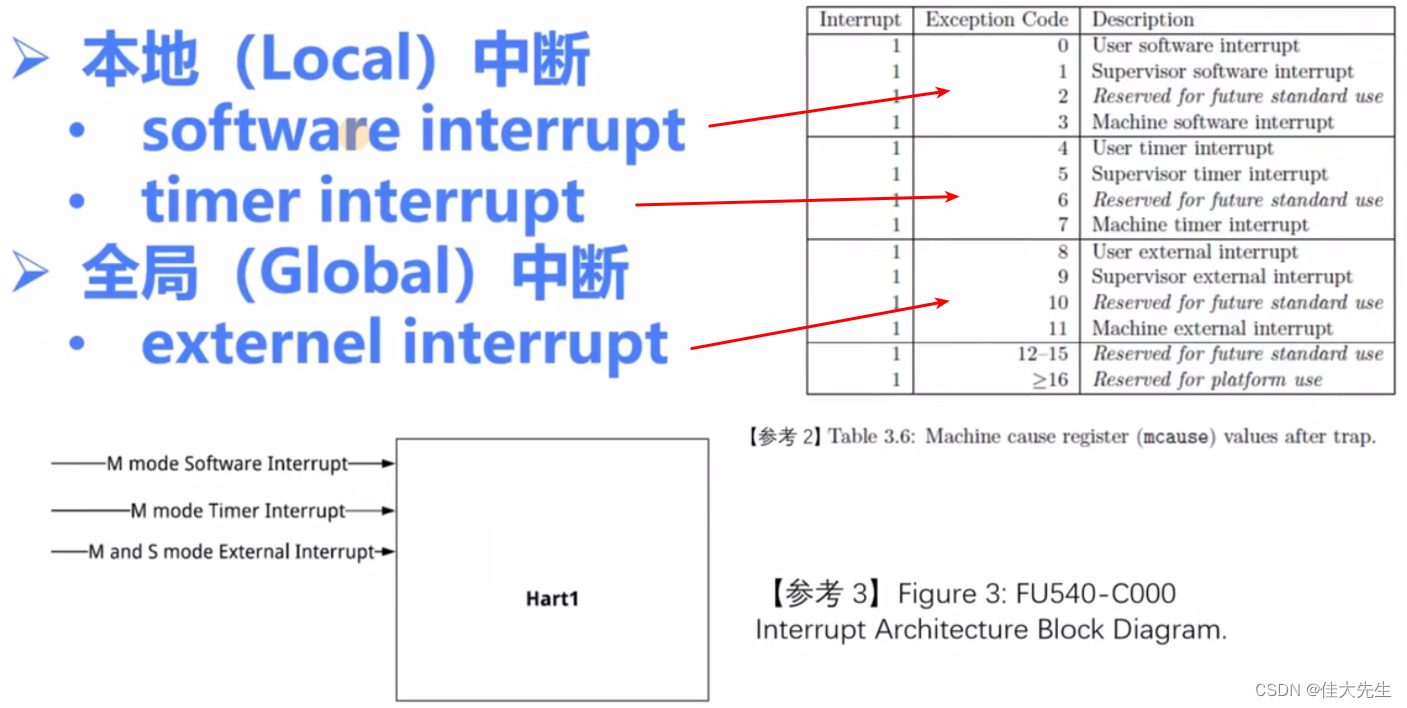
- externel interrupt
3、 ... and 、 Interrupt related registers (mie/mip)
mstatus The register of MIE The flag bit is the global interrupt switch bit , Equivalent to level 1 interrupt flag .
mie (Machine interrupt Enable)
Used for setting up M/S/U Corresponding in mode External/Timer/Software interrupt .(M/S/U The privilege mode below says )
stay RISCV Next , Will interrupt (interrupt) It is subdivided into three types : Timed interrupt (timer)、 Internuclear interruption (soft)、 Interrupt Controller Interrupt (external). Timed interrupts can be used to generate tick, Internuclear interrupts are used for different cpu Nuclear communication , The interrupt controller is responsible for all peripheral interrupts . This design and arm It's a little different , stay arm Multi core , Timer interrupt in architecture 、 Inter core interrupt and peripheral interrupt are managed by interrupt controller , And in the RISCV Timer and inter core interrupt are separated in , These two interrupts are called CLINT(Core Local Interrupt), The interrupt controller that manages other peripheral interrupts is called PLIC(Platform-Level Interrupt Controller).
mip (Machine Interrupt Pending): Get current M/S/U Corresponding in mode External/Timer/Software Whether the interruption occurs .

Four 、 Privilege mode
RISCV There are three privilege levels under the architecture , Namely Machine、Supervisor and User, abbreviation M Pattern 、S Patterns and U Pattern .M Mode permission is the highest , Programs at this level can access all hardware and execute all privileged instructions ;S Mode is generally used to run the operating system , You can set MMU Use a virtual address ;U Patterns are generally used by ordinary applications , Minimum authority .
M Mode uses physical addresses for access , Not pass MMU, But there are similar arm Next cortex-m Medium MPU function ;S The mode can be set MMU To access memory using virtual addresses , So it's like Linux This kind of operating system runs on S In mode . So someone has to ask , Why? RISCV The architecture privilege pattern is designed like this , Put... Directly M Patterns and S Can't the two modes be integrated ? This has to come from RISCV From the background of the birth of architecture ,RISCV Architecture was born in 2010 About years ago , At this time, whether it is x86 still arm The architecture is relatively mature , therefore RISCV When designing the architecture, it is targeted that this architecture can be used from microcontrollers to large supercomputers . Used on microcontrollers RISCV The architecture is generally only M Pattern , Or use M and U Two modes , Be similar to cortex-m Positioning of architecture ; And in the belt MMU On the chip ,RISCV Architecture is generally used M、S and U Three models , This way “ Building blocks ” Can make RISCV The architecture is applicable to various scenarios .
5、 ... and 、PLIC (Platform-Level Interrupt Controller)
RISC-V The interrupt controller inside , amount to ARM Medium GIC, Mainly deal with external interrupts according to priority
Interrupt source -> Interrupt number -> Interrupt vector -> Interrupt service routine (ISR)-> Interrupt return
Interrupt source ID Range :1 ~ 53(0x35),0 Retain 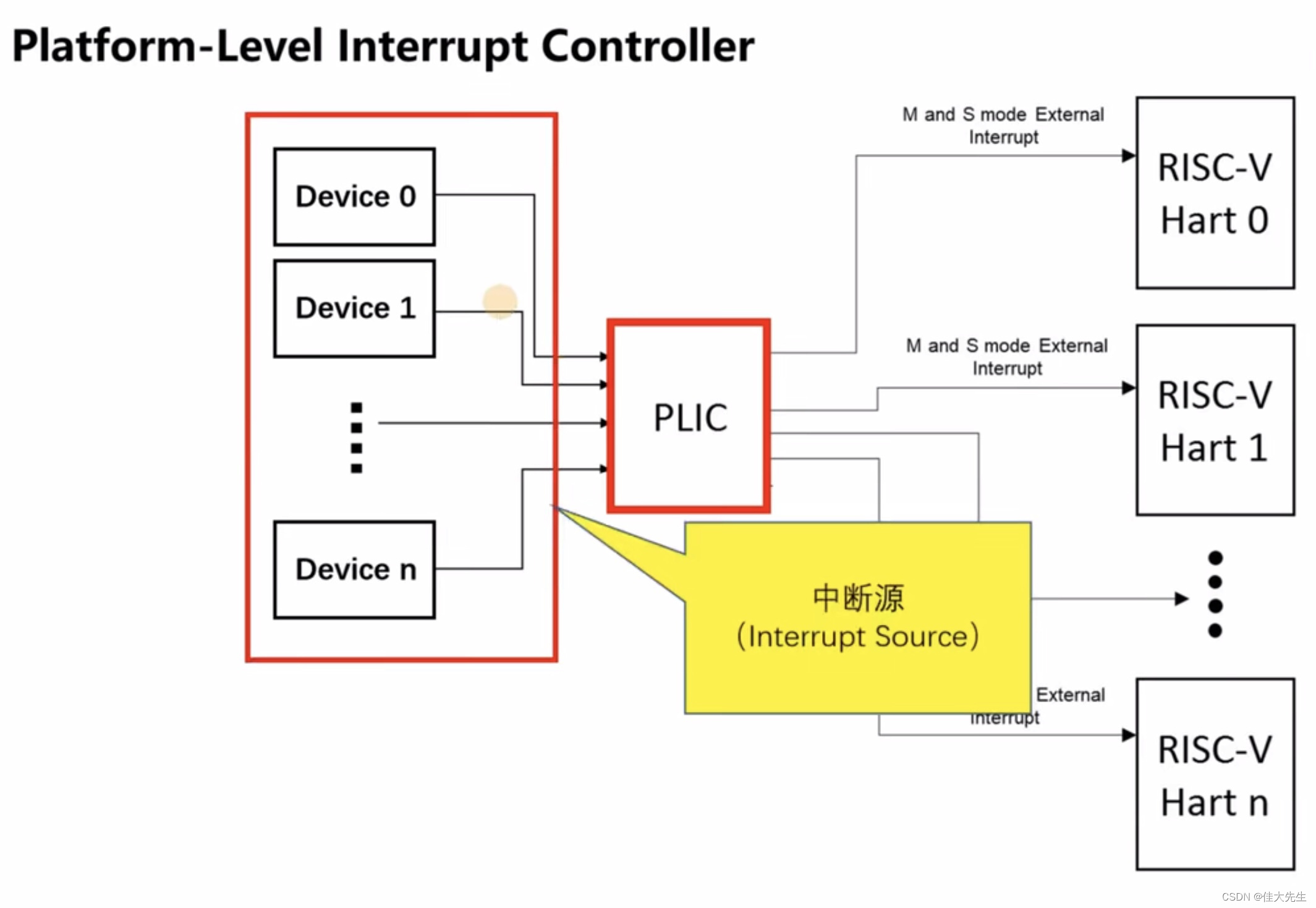
PLIC Programming interface (API) - register
- RISC-V Specifications stipulated ,PLIC Memory mapping is used in the register programming of (memory map) The way . The width of each register is 32 - bit.
- Specific register addressing adopts base + offset The format of , And base By each specific platform Define your own .
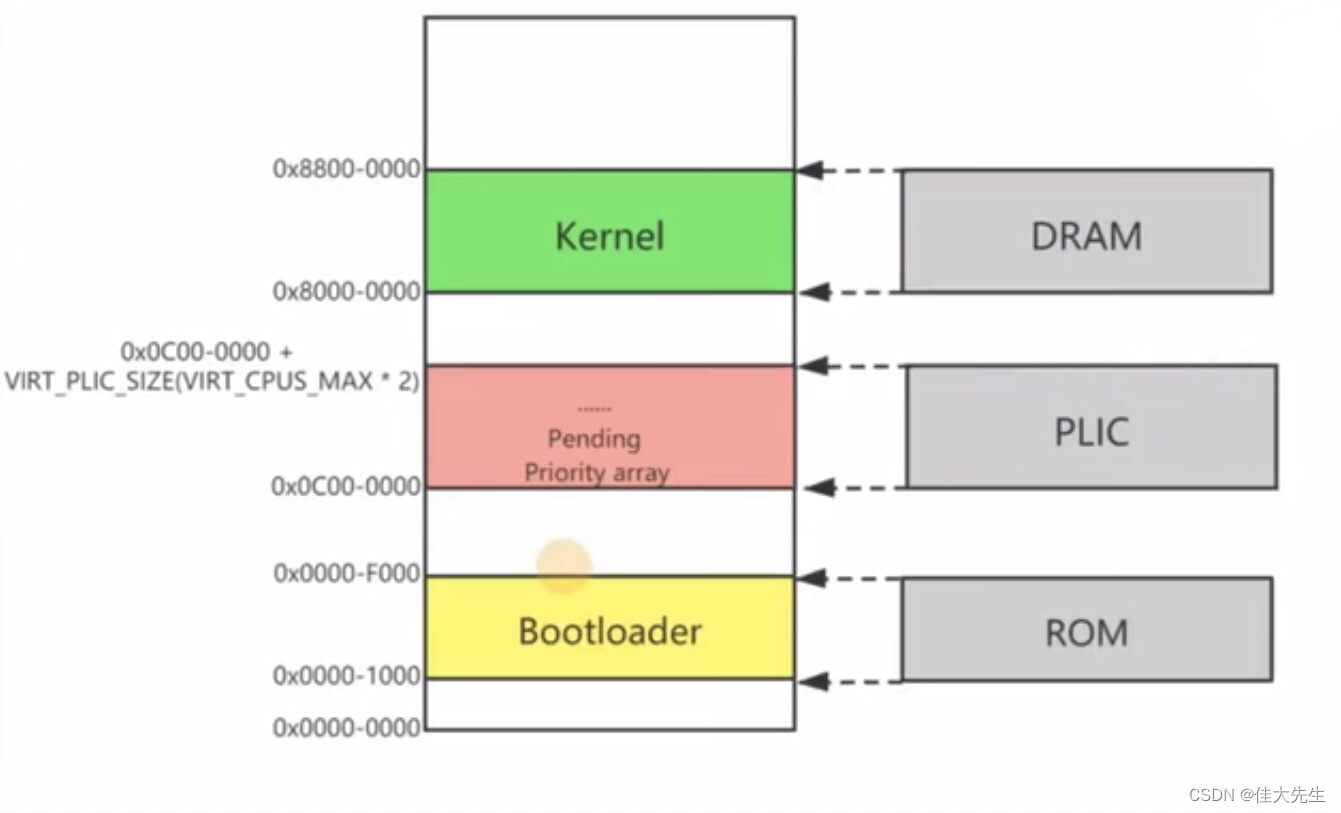
Priority register
| Programmable register | Function description | Memory mapped address |
|---|---|---|
| Priority | Set the priority of an interrupt source | BASE + (interrupt-id) * 4 |
- Every PLIC Interrupt sources have a memory mapped address , The register pointed to by this address is used to configure the priority of the interrupt source .
- If two interrupt sources have the same priority , According to the ID Values further prioritize ,ID The smaller the value, the higher the priority
Pending register
| Programmable register | Function description | Memory mapped address |
|---|---|---|
| Pending | Used to indicate whether an interrupt source occurs | BASE + 0x1000 + ((interrupt-id/32)) |
- Every PLIC The interrupt controller contains 2 individual 32 Bit Pending register ( because 52 Interrupt sources 1 individual 32bit Cannot express completely ), every last bit Corresponding to an interrupt source , by 1 Indicates that an interrupt has occurred on the interrupt source ( Get into Pending state ), remain hart Handle , Otherwise, it means that there is currently no interrupt on the interrupt source .
- Pending Register interrupt Pending The state can pass through claim Way to clear .
- first Pending The first of the registers 0 Bit correspondence does not exist 0 Interrupt source No , Its value is always 0.
Enable register
| Programmable register | Function description | Memory mapped address |
|---|---|---|
| Enable | For something hart Turn on or off an interrupt source | BASE + 0x2000 + (hart) * 0x80 |
- Every Hart Yes 2 individual Enable register (Enable1 and Enable2) For this Hart Start or close a certain interrupt source .
- Each interrupt source corresponds to Enable One of the registers bit, among Enable1 Be responsible for controlling 131 Interrupt source No ;Enable2 Be responsible for controlling 3253 Interrupt source No . The corresponding bit Bit is set to 1 Indicates that the interrupt source is enabled , Otherwise, it means that the interrupt source is closed .
Threshold register
| Programmable register | Function description | Memory mapped address |
|---|---|---|
| Threshold | For something hart Set the threshold of interrupt source priority | BASE + 0x200000 + (hart) * 0x1000 |
- Every Hart Yes 1 individual Threshold Register is used to set the threshold of interrupt priority .
- All less than or equal to (<=) Even if the interrupt source of this threshold occurs, it will be PLIC discarded . Specially , When the threshold is 0 Interrupts that occur on all interrupt sources are allowed ; When the threshold is 7 Discard all interrupts that occur on the interrupt source .
Claim/Complete register
| Programmable register | Function description | Memory mapped address |
|---|---|---|
| Claim/Complete | Get the interrupt source with the highest priority currently occurring ID/ notice PLIC The processing of the interrupt has ended | BASE + 0x200004 + (hart) * 0x1000 |
- Claim and Complete It's the same register , Every Hart One .
- Reading this register is called Claim, That is, get the interrupt source with the highest priority currently occurring ID.Claim After success, the corresponding Pending position .
- Writing to this register is called Complete. So-called Complete Means notice PLIC The processing of this route interrupt has ended .
6、 ... and 、 Interrupt processing flow
Even if the interruption occurs at the same time , It will also respond according to the filter of interrupt priority .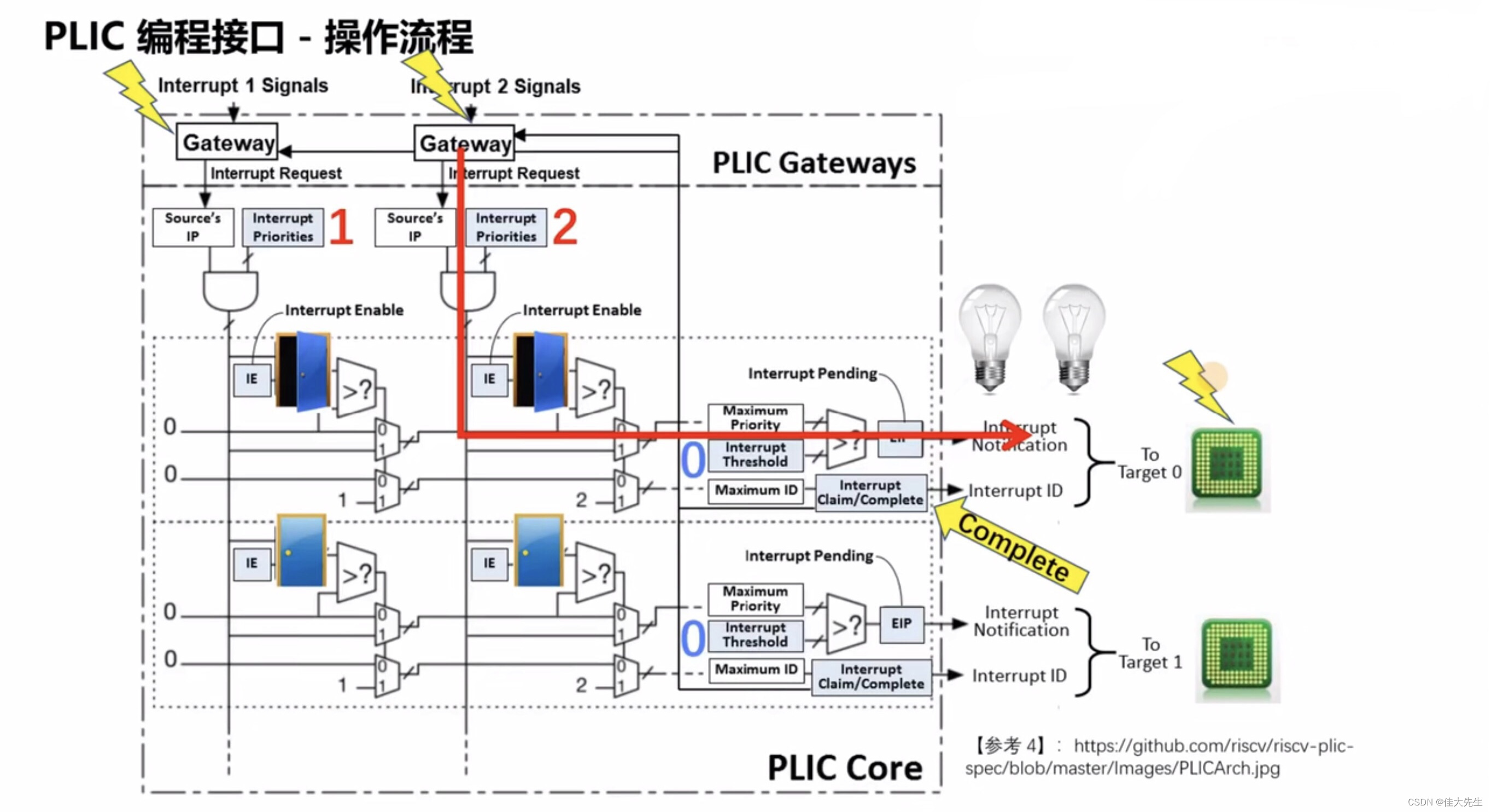
Details can be skipped
FreeRTOS The interrupt mechanism of can jump
边栏推荐
- ERA5再分析资料下载攻略
- MPLS experiment
- [Chongqing Guangdong education] higher mathematics I reference materials of Southwest Petroleum University
- 继承day01
- three.js网页背景动画液态js特效
- 这些不太会
- Mysql database operation
- Codeforces 5 questions par jour (1700 chacune) - jour 6
- Explore pointers and pointer types in depth
- Résumé des méthodes de reconnaissance des caractères ocr
猜你喜欢

蓝色样式商城网站页脚代码

codeforces每日5题(均1700)-第六天
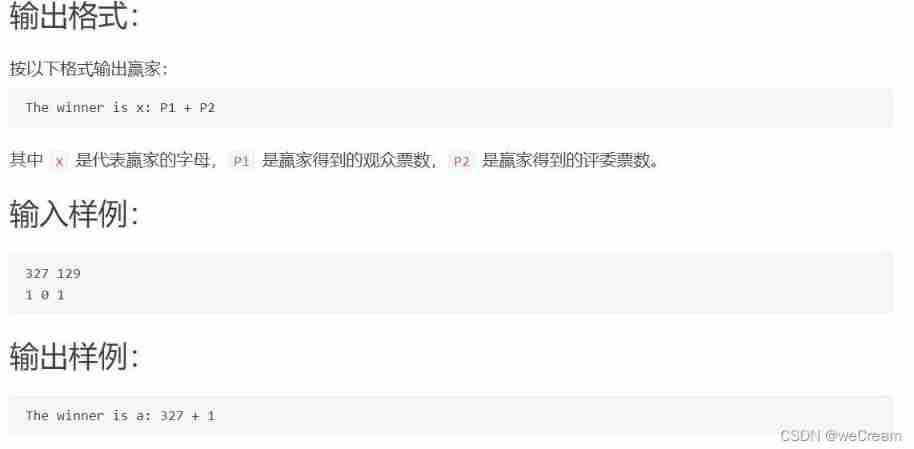
Who is the winner of PTA
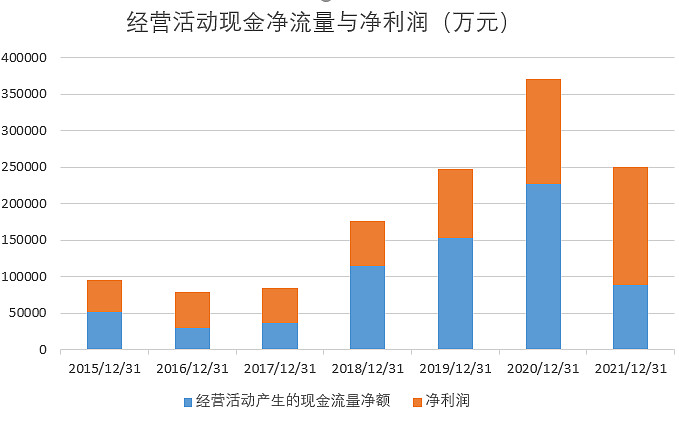
What is the investment value of iFLYTEK, which does not make money?
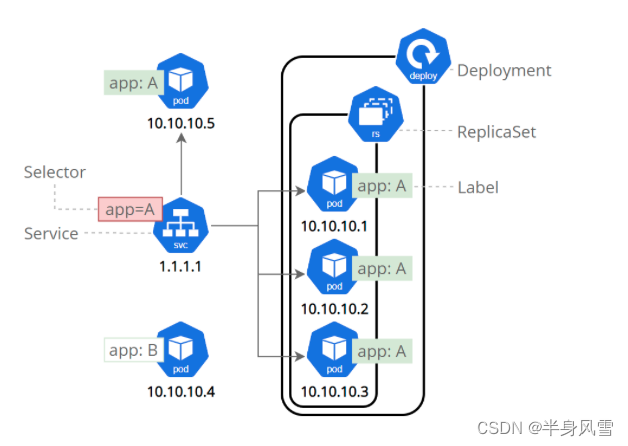
【Kubernetes 系列】一文学会Kubernetes Service安全的暴露应用
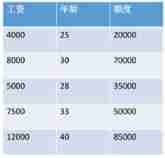
Linear programming matlab

codeforces每日5題(均1700)-第六天
![Huawei, H3C, Cisco command comparison, mind map form from the basic, switching, routing three directions [transferred from wechat official account network technology alliance station]](/img/3b/385d19e51340ecd6281df47b39f40c.png)
Huawei, H3C, Cisco command comparison, mind map form from the basic, switching, routing three directions [transferred from wechat official account network technology alliance station]
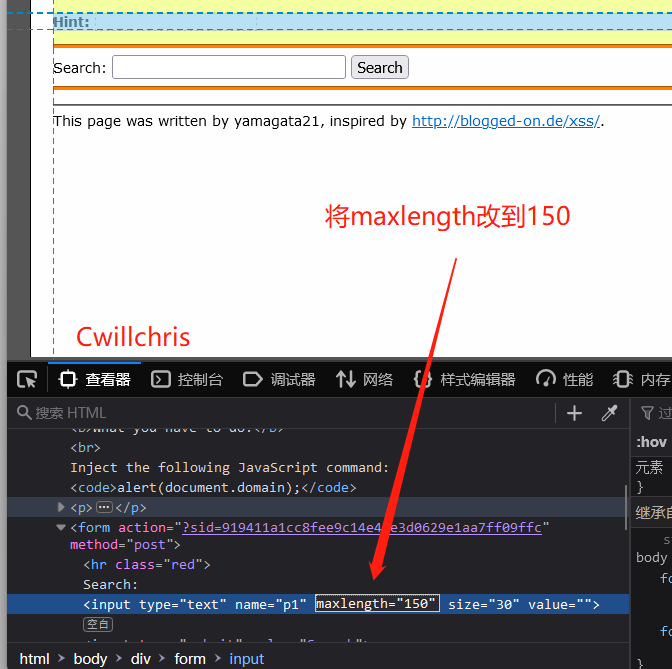
XSS challenges绕过防护策略进行 XSS 注入

【概念】Web 基础概念认知
随机推荐
Add one to non negative integers in the array
1.16 - 校验码
Overview of OCR character recognition methods
这些不太会
不赚钱的科大讯飞,投资价值该怎么看?
canvas切积木小游戏代码
#PAT#day10
ERA5再分析资料下载攻略
【若依(ruoyi)】启用迷你导航栏
Is there a completely independent localization database technology
Explore pointers and pointer types in depth
February 14, 2022 Daily: Google long article summarizes the experience of building four generations of TPU
MPLS experiment
Self made CA certificate and SSL certificate using OpenSSL
js 正则过滤和增加富文本中图片前缀
How to do function test well
Zhang Lijun: penetrating uncertainty depends on four "invariants"
Redis SDS principle
Audio-AudioRecord Binder通信机制
[pointer training - eight questions]